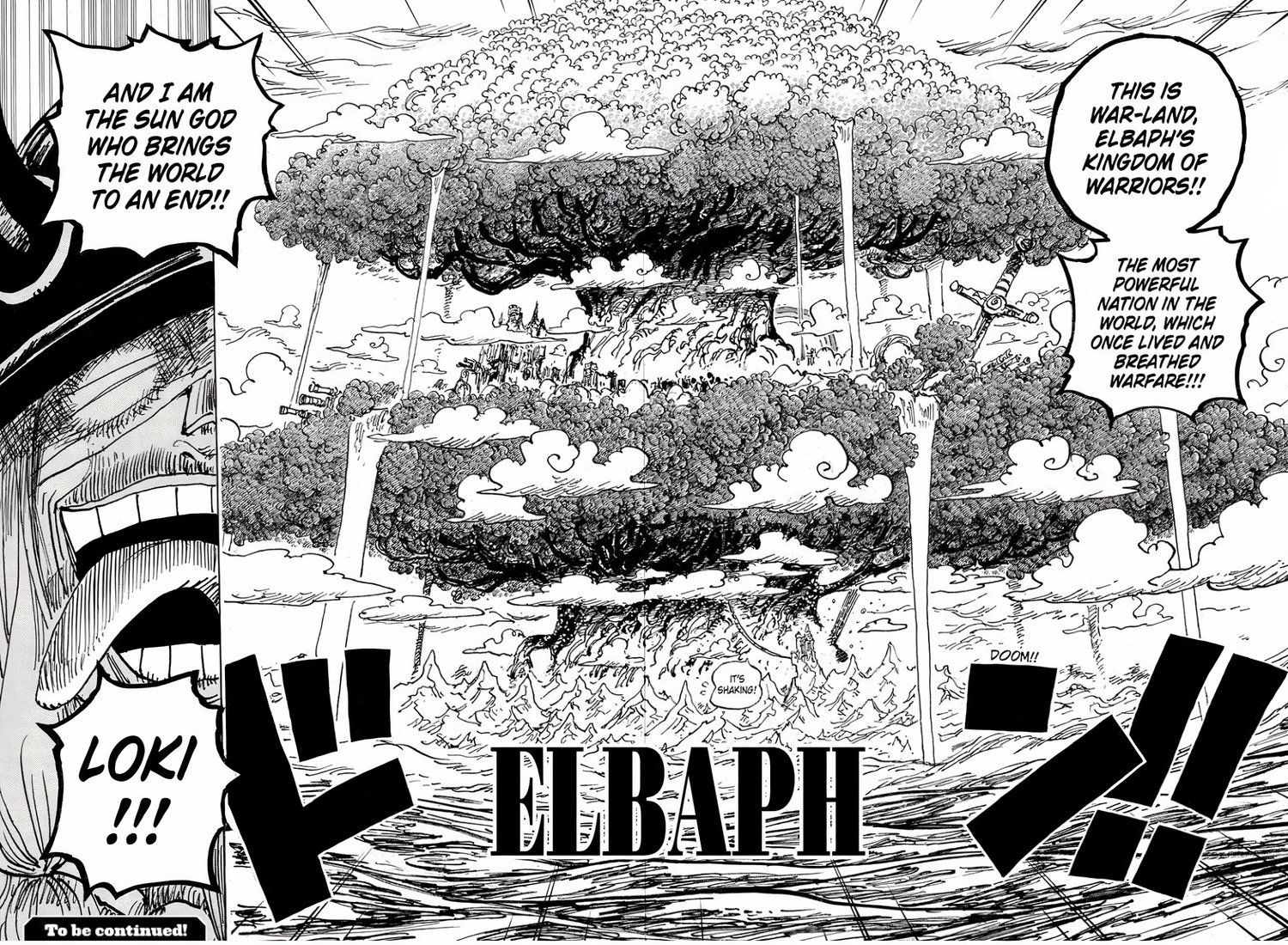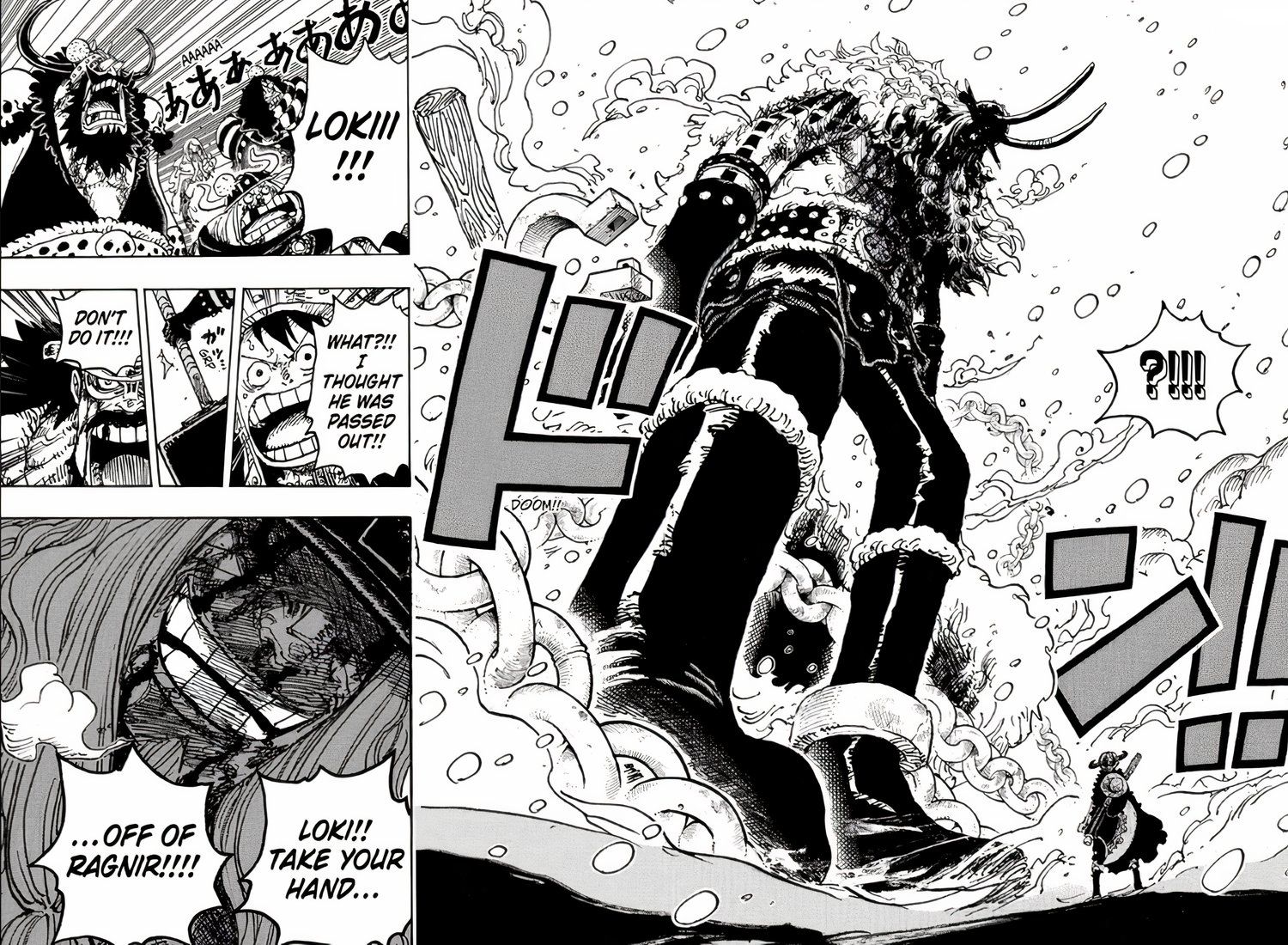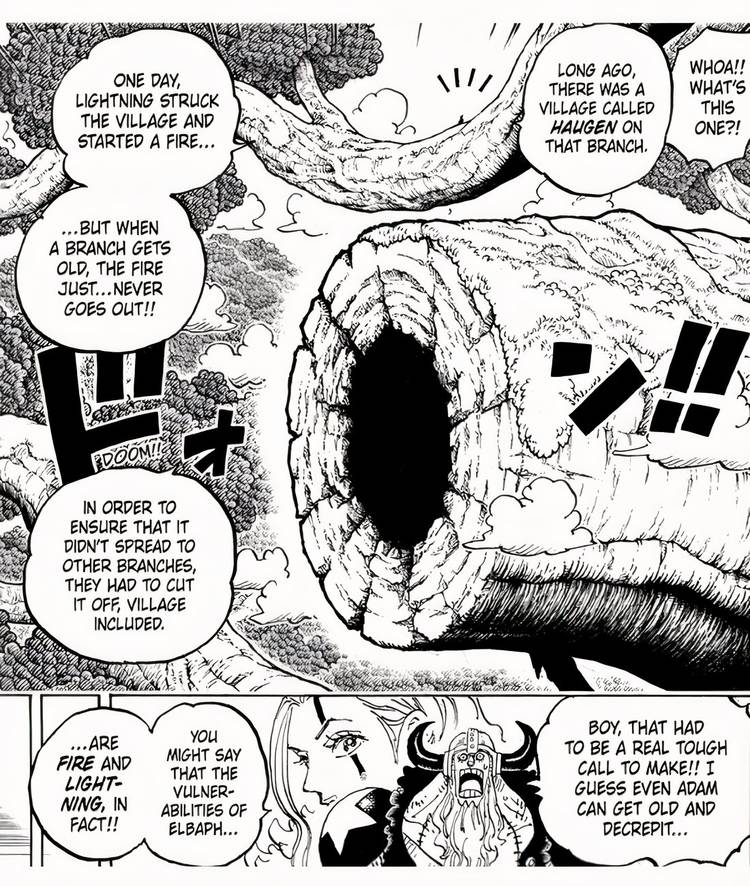The realm of the enigmatic character Loki from the long-established Elbaph has increasingly intertwined with the mythologies of Northern Europe, creating a new connection highlighted by the introduction of the enigmatic figures within One Piece.

This new connection deepens as many realms of the character Loki are revealed. The entire narrative and context of Elbaph possess elements that distinctly diverge from Northern European mythology, including the prominent depiction of a rainbow bridge, undoubtedly representing the legendary Bifröst. Despite the evident mythological influences, Elbaph’s storyline still lacks a crucial aspect to fully connect it with Northern European legends. Fortunately, the latest chapter has resolved this issue by illustrating Loki’s escape, along with the unique power of his weapon, Ragnir.
One Piece unveils Loki’s unique powers, enriching the connection between Elbaph and Northern European mythology

In One Piece chapter 1141 titled “An Old Age Woman’s Folly,” a significant moment occurs: Zoro confronts Loki. As soon as he is freed, Loki eagerly grasps the unique weapon known as Ragnir. The preceding scene featuring Hajrudin was particularly intense as he earnestly requested Loki to relinquish the weapon he refers to as “Ragnir.” The Kanji translation of “Ragnir” means “Thunder and Darkness.”
With a form resembling a hammer and the name symbolizing “darkness,” Ragnir clearly draws inspiration from the mythical weapon of Thor, Mjolnir. This connection completes the intricate relationship between Elbaph and Northern European mythology, as an essential element of that storyline is the evident link to Thor.
While Loki’s appearance has made him one of the most symbolic characters within the Northern European mythological context, the narrative approaches this connection uniquely by intertwining Thor’s attributes with those of Loki. However, the significance of Ragnir stands out beyond its mythological ties, as it strongly embodies Loki’s reality against Elbaph.
Loki’s powers transform him into a central figure in the narrative of Elbaph

Before One Piece chapter 1141 reveals Loki’s powers and the nature of his weapon, it first transitions into a dialogue between Ripley and Franky, which could be perceived as a commentary on the environment of Elbaph and the Adam Tree. Ripley reveals that all the enigmatic characters of Elbaph are situated on the Adam Tree, where the living conditions are quite precarious due to the constant threat of lightning and destruction. This detail becomes even more significant when considering Loki’s weapon, Ragnir, which is associated with the formidable power of thunder. This serves as a reminder of why the enigmatic character Loki is crucial, as he possesses immense power that could potentially disrupt all of Elbaph.
Moreover, it raises the question of why Ragnir embodies such potent lightning powers and why it is associated with Loki. As long as Ragnir is classified as a weapon of immense power, its magical properties remain unexplored, particularly since this weapon has already been linked to the chaotic nature of the thunder. One Piece has subtly hinted that even inanimate objects can embody the tremendous power of chaos, giving Ragnir a compelling allure.
Loki’s powers may represent the chaotic essence of thunder, rather than Loki himself

The narrative has emphasized that the chaotic essence of thunder is a unique attribute, which could suggest that this power may be transferred to various inanimate objects without being diminished. If Ragnir indeed represents the chaotic nature of thunder, it could explain why it is often linked with Loki.
This raises the intriguing possibility that Loki may be the only lawful user of this chaotic power, given that the reasons behind it have not yet been fully explored. If this hypothesis holds true, then One Piece has established a firm foundation for Loki’s character development and the essential powers of Ragnir within the ongoing narrative surrounding Elbaph.





















